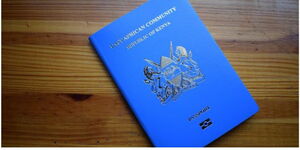US-based Company, Bechtel Engineering, has revealed that it declined to construct the 473-kilometre Nairobi- Mombasa Expressway due to the differences with the Kenyan government over the financing model to be used.
Speaking to an international news outlet, the company's spokesperson Aileen Easton noted that president Uhuru Kenyatta's administration proposed the US-based firm fund the project and recoup its money in a toll-based model.
He detailed that the firm declined the proposal, countering with a contractual-based model where the Kenyan government would secure the funds from another company or a loan to finance the project.
Easton added that the company's priority is to provide value to the public through an effective financing model that aims at minimising costs.
“Our approach will always set out to minimize building costs and pursue the fiscally responsible option.”
"We are committed to providing the best possible value of money for the Kenyan people," Easton stated.
He added that the fallout led to the Kenyan government settling on Korean-based firm, Korean Overseas Infrastructure and Urban Development Corporation Africa to take over the project.
The firm has since undertaken a fresh feasibility study with various stakeholders in the public transport sector including the Kenya National Highways Authority (KeNHA), and officials from the Ministry of Transport, Infrastructure, Housing, Urban Development and Public Works.
KeNHA tasked the Korean firm to come up with new plans regarding the traffic flow and sections of the road that is slated to be made public by the Authority at a later date.
The differences in the model types between the US and Kenyan governments led the project to stall for over five years. The initial agreement between the Kenyan government and the US Government's financial institution, Overseas Private Investment Corporation (OPIC) for the project to commence was signed in September 2016.
The road was projected to cost Ksh318 billion, touting it as the ultimate solution for traffic and curbing the time spent on the roads between Kenyan's biggest cities.
The planned dual carriage was to be divided into three main sections; one to begin at Jomo Kenyatta International Airport (JKIA) in Nairobi and end at Kibwezi in Makueni stretching for 174 kilometres.
The second section was to run between Kibwezi and Voi which is 132 kilometers and the third section was between Voi and Mombasa covering the last 160 kilometers.












